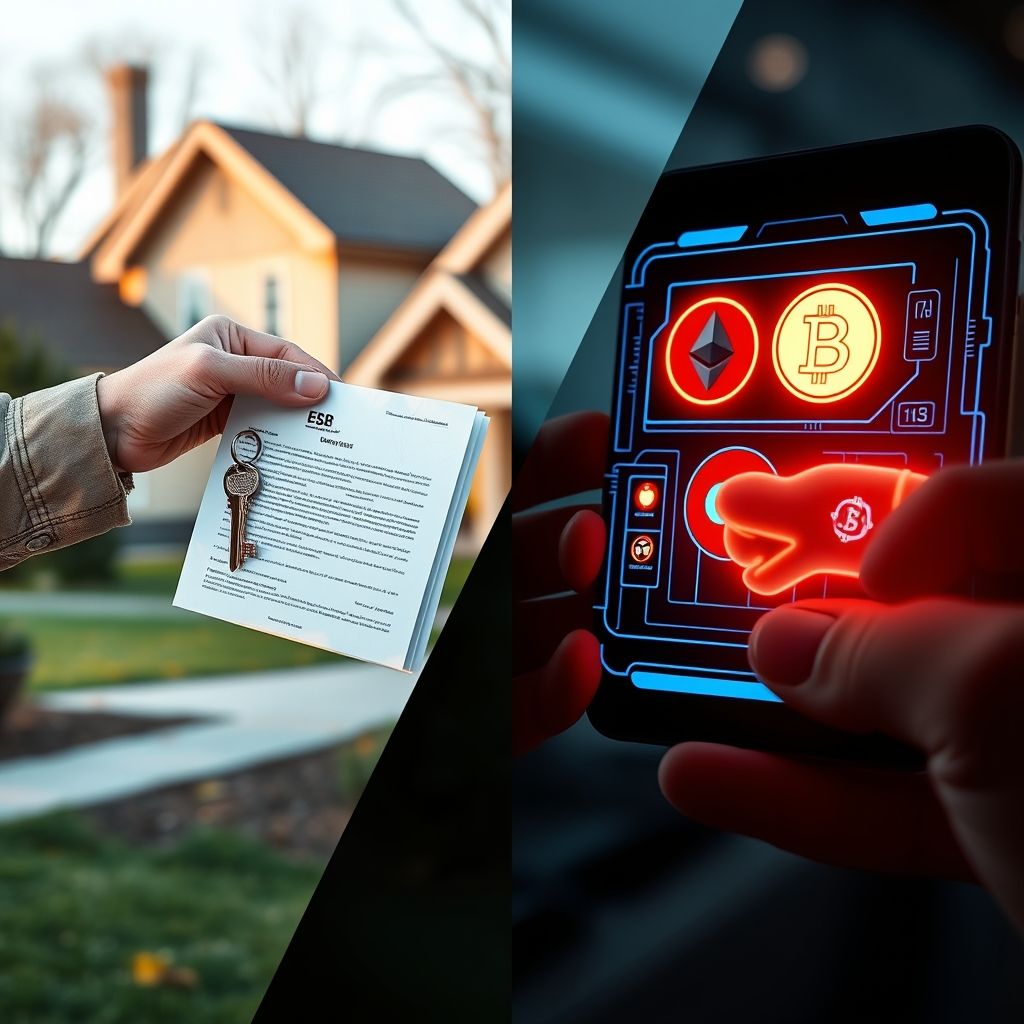How is ownership transferred for real-world versus digital assets?
How Is Ownership Transferred for Real-World versus Digital Assets?
Ever tried to imagine buying a house or a car versus snagging a rare NFT or crypto coin? The way ownership moves from one hand to another is a huge part of how our economy functions—whether in brick-and-mortar or the digital realm. But as the world shifts more and more into online assets, understanding the ins and outs of transferring ownership for both real-world and digital assets isn’t just interesting—it’s essential, especially if you want to stay ahead in this rapidly evolving landscape.

The Traditional Route: Ownership of Real-World Assets
When you buy a house, a car, or even artwork—these are what we call tangible assets. Ownership transfer here is a process built over centuries of legal tender. Typically, it involves a chain of official documents—deeds, titles, registration papers—that are recorded, filed, and sometimes require notarization or court approval.
Think about buying a house: you sign a deed, the bank records it, and eventually, the title is officially transferred into your name. It’s a formalized, often slow process—think days or weeks—full of paperwork, middlemen like agents, lawyers, and bureaucratic hurdles. This process has been designed to protect parties on both sides, making sure that what you buy is rightfully yours, but it also introduces opportunities for delays and potential complications.
Digital Assets: A New Paradigm for Ownership
Contrast that with digital assets—cryptocurrencies, NFTs, or even virtual land—where ownership isn’t recorded on paper but stored in digital ledgers. Blockchain technology basically acts as a transparent, tamper-proof ledger that records every transaction. Transfer of ownership happens with a simple cryptographic transaction—think of it as sending an email to another person, but instead, you’re transferring a digital key that verifies your ownership.
What’s wild about digital assets is the speed and simplicity. No need for notarization or middlemen—once you send the transaction and it’s validated by the network, the digital asset is yours or the recipient’s almost instantly. It’s a system built for seamless, borderless trading, with clear proof of ownership encoded into the blockchain.
Advantages and Challenges: Real vs. Digital
Real-world assets come with a lot of familiar safeguards—title insurance, legal protections, notarization—and a whole industry dedicated to preventing fraud. But that process can be slow, costly, and rather bureaucratic. Plus, physical assets are vulnerable to theft, damage, or loss, making insurance and physical security vital.
On the flip side, digital assets punch well above their weight when it comes to liquidity and accessibility. You can buy or sell an NFT instantly from your couch, and cross-border transactions are nearly frictionless. Nevertheless, the digital world also faces hurdles—cybersecurity threats, regulatory gray areas, and the risk of losing access to digital wallets or keys.
Web3 and the Future of Asset Transfer
Looking ahead, these distinctions are blurring. The rise of Web3, decentralized finance (DeFi), and smart contracts suggest a shift toward more automated, trustless transfer processes. Imagine a world where your ownership of a property or a stock is transferred immutably through a blockchain-based smart contract capable of executing asset transfer once certain conditions are met—no lawyers, no delays.
For traders and investors diving into forex, stocks, commodities, or options, this could mean more transparent, secure transactions with built-in safeguards. Strategies like leveraging positions or hedging risks might evolve to incorporate these new technologies. Think about AI-driven trading algorithms analyzing market trends while smart contracts execute trades with minimal human intervention—they’re not just futuristic ideas anymore.
Challenges on the Horizon
Of course, decentralization isn’t without its bumps. Regulatory uncertainties, scalability issues, and potential security flaws keep the industry on its toes. As digital assets grow more sophisticated, so do concerns about scam schemes or hacking. Ensuring the reliability and safety of digital ownership transfers will demand ongoing innovation and robust standards.
Embracing the New Financial Frontier
With the rapid development of decentralized financial platforms, digital ownership, and automated trading tools, the line between tangible and virtual is dissolving. The future points to a more integrated ecosystem where ownership transfer is faster, safer, and more transparent—all powered by blockchain, AI, and smart contracts.
If youre looking to stay ahead—whether you’re trading forex, stocks, or digital collectibles—a mix of technological savvy and cautious optimism will serve you best. As digital and physical worlds continue blending, understanding how ownership is transferred isn’t just bubbling hot news—its your gateway to smarter investments and more secure transactions.
Remember: In this new era, ownership is just a click away—fast, transparent, and unstoppable.